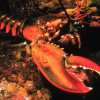Brain to Z: B is for brainstem
The brainstem is the deepest, most primitive part of the brain: the first part to form in our evolutionary journey. It's a sturdy stalk that connects the brain to the spinal cord, the many pathways within it maintaining this strong line of communication. The brainstem plays a crucial role in maintaining many vital bodily processes, which means its structure is conserved across many vertebrates in the animal kingdom, including birds, fish and mammals.
It’s split into 3 parts: the medulla oblongata, the pons, and the midbrain.
Starting at the base, the medulla oblongata, also known simply as the medulla, transitions seamlessly into our spinal cord. This is the most significant portion of the brainstem in maintaining cardiovascular and respiratory functions: our breathing, heart rate and blood pressure. Using information transmitted directly from blood vessels, the medulla instigates reflexive actions when it needs to; keeping our blood pressure in a safe range and the right levels of oxygen in our blood, part of homeostasis, our body’s automatic maintenance of stable internal conditions. Dysfunctions of this line of communication between blood vessels and the medulla are common features of cardiovascular and respiratory diseases.
The next part of the brainstem is called the pons. Latin for bridge, you’ll be unsurprised to hear that the pons plays a connecting role, especially between the brainstem and our cerebellum - a part of the brain that plays an important role in our voluntary movements and balance. Within this region reside nuclei responsible for cranial nerves and handling sensations from the head and face. As well as managing the movements of our facial features, it also has a role in automatic functions such as tear and saliva production.
The final section of our journey from the spine up the brainstem leads us to the midbrain. Here you’ll find four bumps representing 2 paired structures: the superior and inferior colliculi. They play a role in eye movement, visual processing, and auditory functions. You’ll also find important nuclei producing dopamine (the happiness hormone.)
So a lot is going on in this compact region, a reflection of its important role in so many basic functions!
- Previous Dynamic coastlines
- Next Ramping up brain chip regulations










Comments
Add a comment